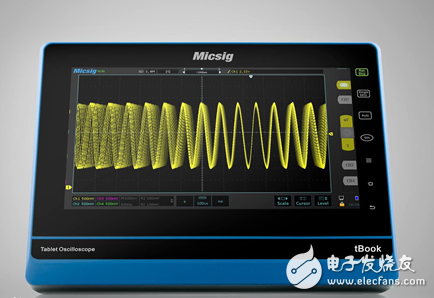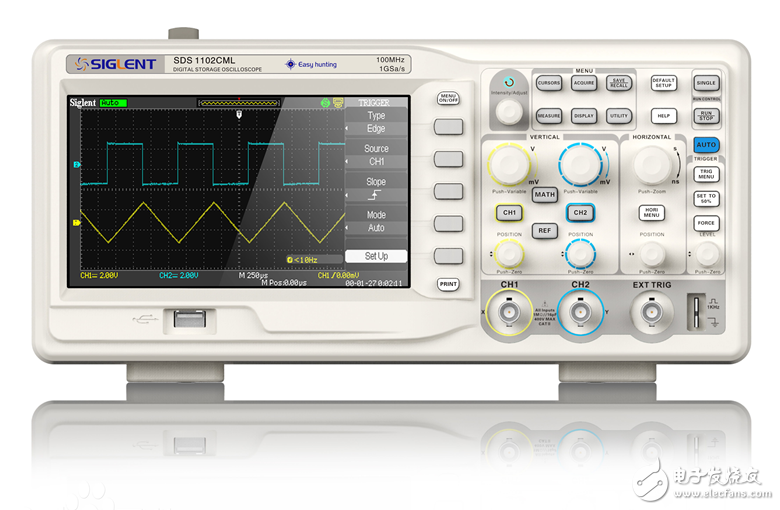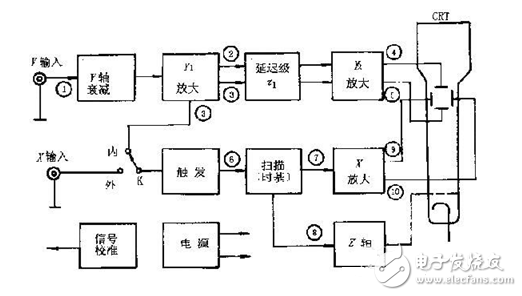An oscilloscope is a widely used electronic measuring instrument. It can transform the electrical signals that are invisible to the naked eye into visible images, so that people can study the changes of various electrical phenomena. The oscilloscope uses a narrow beam of high-speed electrons to create a tiny spot on a phosphor-coated screen (this is how traditional analog oscilloscopes work). Under the action of the signal under test, the electron beam is like the tip of a pen, and the curve of the instantaneous value of the measured signal can be drawn on the screen. The oscilloscope can be used to observe waveforms of various signal amplitudes over time, and can also be used to test various types of power, such as voltage, current, frequency, phase difference, amplitude, and so on.
Basic trigger mode of the oscilloscopeWhat is the trigger mode of the oscilloscope? We know that oscilloscopes need to use a "trigger" method to synchronize the oscilloscope's scan with the observed signal to display a stable waveform. The so-called "trigger mode" refers to the way selected to generate the trigger to meet the different The observation needs.
There are three most common trigger modes for oscilloscopes: the first one is “auto mode†and the oscilloscope panel is generally labeled “AUTOâ€. In this mode, when the trigger does not occur, the oscilloscope's scanning system automatically scans according to the set scan rate; when a trigger occurs, the scanning system tries to scan at the frequency of the signal. So in this mode, regardless of whether the trigger condition is met, the oscilloscope will generate a scan, and you can see the changed scan line on the screen. This is the characteristic of this mode.

The second is "normal mode", also known as "normal mode", which is generally labeled "NORMAL" or "NORM" on the panel. This mode is different from the automatic mode, in which the oscilloscope scans only when the trigger condition is met, and if there is no trigger, it does not scan. Therefore, if there is no trigger in this mode, you will not see the scan line for the analog oscilloscope, and there is nothing on the screen. For the digital oscilloscope, you will not see the waveform update. If you don't understand this, you will often Thought it is the signal is not connected or what other faults.
The third type is "single mode", which is generally labeled "SINGLE" or "SIGL". This mode is similar to the "normal mode" in that the scan is generated only when the trigger condition is met, otherwise it is not scanned. The difference is that once the scan is generated and completed, the oscilloscope's scanning system enters a rest state, so that even if there is a signal that satisfies the trigger condition, it will not be scanned any more, that is, the trigger will scan only once. That is, in a single operation, the scanning system must be manually restarted to generate the next trigger. Obviously, for a normal analog oscilloscope, you often find nothing in this mode, because the waveform can't be saved because the waveform flashes, so in addition to the camera, the flashing waveform is taken down. In most cases this mode is useless.

An oscilloscope is an electronic measuring instrument that utilizes the characteristics of an electronic oscilloscope to convert an alternating electrical signal that cannot be directly observed by the human eye into an image and display it on a fluorescent screen for measurement. It is an important instrument for observing the experimental phenomena of digital circuits, analyzing problems in experiments, and measuring the results of experiments. The oscilloscope consists of an oscilloscope and power system, a synchronization system, an X-axis deflection system, a Y-axis deflection system, a delay scanning system, and a standard signal source.

Basic composition of the oscilloscope
RAM/RFM Intermediate Frequency Capacitors
RAM/RFM intermediate frequency capacitors
Intermediate Frequency Capacitors,Induction Heating Capacitors,Furnace Resonant Capacitor
YANGZHOU POSITIONING TECH CO., LTD. , https://www.cnchipmicro.com